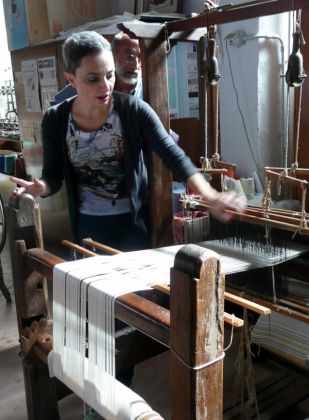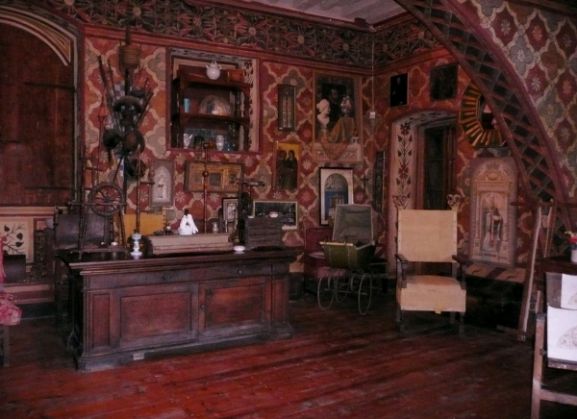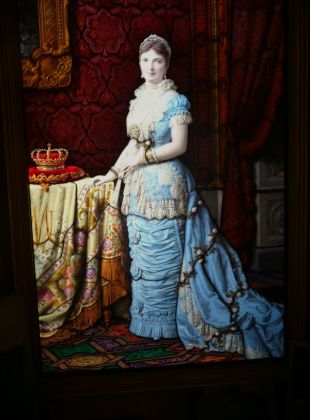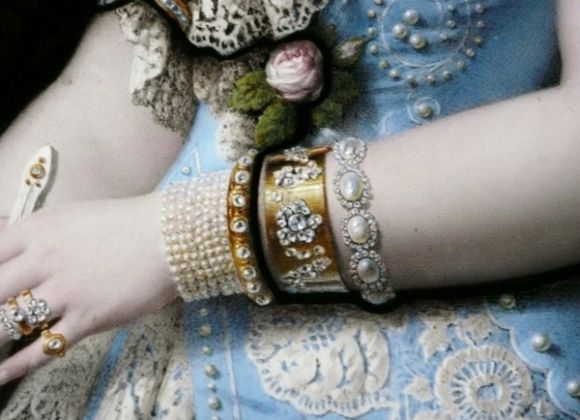We continue our series of traditional Italian crafts with two workshops preserving family businesses in Perugia
There are many reasons for visiting Perugia, Umbria's historic capital. The mediaeval city centre is an open-air gallery of art and architecture, perched high on a plug of rock with sweeping 360-degree views over landscapes that evoke the paintings of Perugino.
But, at the same time, it is not a city imprisoned in its past. The ingenious 21st-century system of cable cars and escalators that whisks citizens and visitors up from the valley to the old town through the dark bowels of the 16th-century Rocca Paolina fortress is as thrilling and memorable as a theme park ride. But many of Perugia's most fascinating secrets stay hidden from the average visitor, such as the traditional workshops of artists and artisans, who courageously continue to face the challenge of mounting competition in the global market.
The stories of Marta Cucchia and Maddalena Forenza are similar – two young women who have chosen to dedicate their lives to preserving the crafts their families have perfected over generations. Both work in fascinating studio-museums and are happy to demonstrate their art and techniques to visitors.
A scenic walk along the street built on top of an ancient Roman aqueduct that soars over brown tiled rooftops and little gardens, mostly rented out to the foreign students attending the nearby Università degli Stranieri, leads to Cucchia's handloom weaving laboratory, named after her great-grandmother Giuditta Brozzetti. The atelier is situated in the deconsecrated 14th-century church of S. Francesco delle Donne in a leafy suburb on the fringe of the mediaeval centre. The light-flooded interior, with its tall windows and high arched nave, makes an ideal setting for the nine historic 18th- and 19th-century handlooms that Marta's mother transferred in 1996 to the present site from the family factory at Monteripido, just outside Perugia.
Above the looms hangs a collection of patented jacquard templates and the shelves are draped with samples of linen, cotton, silk, damask and other textiles, woven in the intricate traditional patterns typical of the area. Perugia's cloth weaving industry goes back many centuries. Known as the pannili alla perugina, typical garments and drapes appear in many frescoes by artists such as Giotto, Sodoma, Ghirlandaio, Lorenzetti and Leonardo. One of Cucchia's specialities consists of reproducing patterns depicted on the apparel of saints featured in mediaeval and renaissance paintings, like the scarf she showed us – an exact copy of the one worn by St Joseph in Luca Signorelli's "Holy Family".
All the patterns contain hidden meanings. "The hare," she explains, "is the symbol of innocence, but if it is depicted being pursued by a dog it means love and marriage. The beligi or blige pattern is inspired by the skeleton of a fish and suggests the movement of water, while the griffon and the fountain are the emblems of Perugia. Other motifs, like the grill, the birds and the eight-petalled roses have religious significance."
Cucchia makes use of an extraordinary gift to help her with her intricate work: she virtually weaves her patterns by sixth sense. "I'm dyslexic. This gave me a lot of problems when I was at school, but here it's been to my advantage. I'm not able to count the threads. But I can feel the design instinctively and I can manipulate the shuttles with the different colours without thinking."
Until the early 1950s the artistic tablecloths, mats, runners and other articles produced by the Brozzetti laboratory were famous. They were exported all over the world and were much in demand, especially in America. But now this has become one of Italy's last remaining workshops carrying on the age-old tradition of hand-weaving on jacquard looms. "We cannot compete with the Chinese," Marta says. "Their prices are much lower, but – " she shakes her head, "the quality is nothing like the same." She demonstrates a few exquisite runners and table mats in the traditional Umbria designs. The prices quoted are not exorbitantly expensive and they could make a unique and very special gift.
The Moretti Caselli studio, where Maddalena Forenza carries on the family business of creating artistic stained glass, is situated in the 15th-century Baglione Palace, huddled beneath the looming rock walls of the Paolina fortress. When you walk through the door, you feel a bit like Alice stepping through the looking glass into a far removed world.
The palace, which the family bought in 1894, has preserved its original architectural features, with diamond-paned windows and wide-spanning supporting arches, while the walls are decorated with stencilled geometric and floral patterns in warm colours. The main hall is an authentic museum of curios, stuffed with a vast variety of props such as musical instruments, weapons, anatomical plaster casts, photographic plates, items of antique furniture and a complete set of armour.
Francesco Moretti, the studio founder, was celebrated as one of the most important stained glass artists of the 19th century along with Ludovico Caselli, his nephew and partner. Among the many works they carried out together were the restoration of the windows of the Franciscan church of S. Maria degli Angeli in Assisi, the Duomo of Orvieto and S. Domenico in Perugia.
"I'm the fifth generation carrying on the family trade," explains Forenza as she shows us round. "And the women of the family have always played an important part." In the 1920s Caselli's two daughters, Rosa and Cecilia (Forenza's great-great aunts), carried out one of the studio's most important commissions. They were asked to create a 40-sqm stained glass panel reproducing Leonardo da Vinci's Last Supper for the Forest Lawn Memorial Park in Glendale, Los Angeles, the burial place of many stars including, more recently, Michael Jackson. The first version cracked during firing – a not uncommon mishap when dealing with such delicate materials – and the panel had to be made all over again, this time successfully. The marred version, with the head of Jesus Christ, however, remains in the studio to be admired.
But admiration is not a strong enough word to use when we stop in front of Francesco Moretti's masterpiece. This is a full-length stained glass portrait of Italy's Queen Margherita of Savoy that he created in 1881, and it simply takes your breath away.
The queen, in a lace-trimmed blue dress, stands beside a richly draped dais. Every detail, from the delicate skin tones to the glow of her jewels and the pearls on the crown, are depicted in minute detail. "It's very difficult to achieve these delicate nuances of colour. The pieces have to be fired four or five times and touched up every time," Forenza explains. "Caselli used a tool of his own invention to perfect the vetri mussolinati technique so that he could achieve a perfect reproduction of fine details like the lace and embroidery."
Miraculously, the portrait was spared when a bomb hit the house during the last war. Now it is considered to be too fragile to be moved, even when it was requested by the Quirinale palace in Rome for an exhibition on the unity of Italy.
The portrait of Queen Margherita was not a commission. Moretto made it because he wanted to demonstrate that stained glass was not a minor art, but could reach the perfection of an oil painting. He created the portrait in 1881 and it was exhibited in London, Rome and Milan in that period.
Originally, he had intended to sell it but then decided to keep it. "Unfortunately, orders for stained glass panels nowadays are usually confined to churches. Not many people think of having one in their homes," Forenza says regretfully.
She tends instead to make smaller stained glass items like Tiffany lamps, costume jewellery and creative ornaments, which she sells in a shop uptown.
Both Cucchia and Forenza freely admit that it is becoming increasingly difficult to make a living off their work. They say they do it mainly for the satisfaction of creating something unique and beautiful, and for the love of the crafts that they strive to preserve.
Margaret Stenhouse
The original of this article appeared in the 3 December edition of Wanted in Rome
General Info
View on Map
Preserving Perugia's ancient crafts
Studio Giuditta Bozzetti, tel. 07540236, 348 5102919. Studio Moretti Caselli, tel. 0755720017, 340 7765594.

























